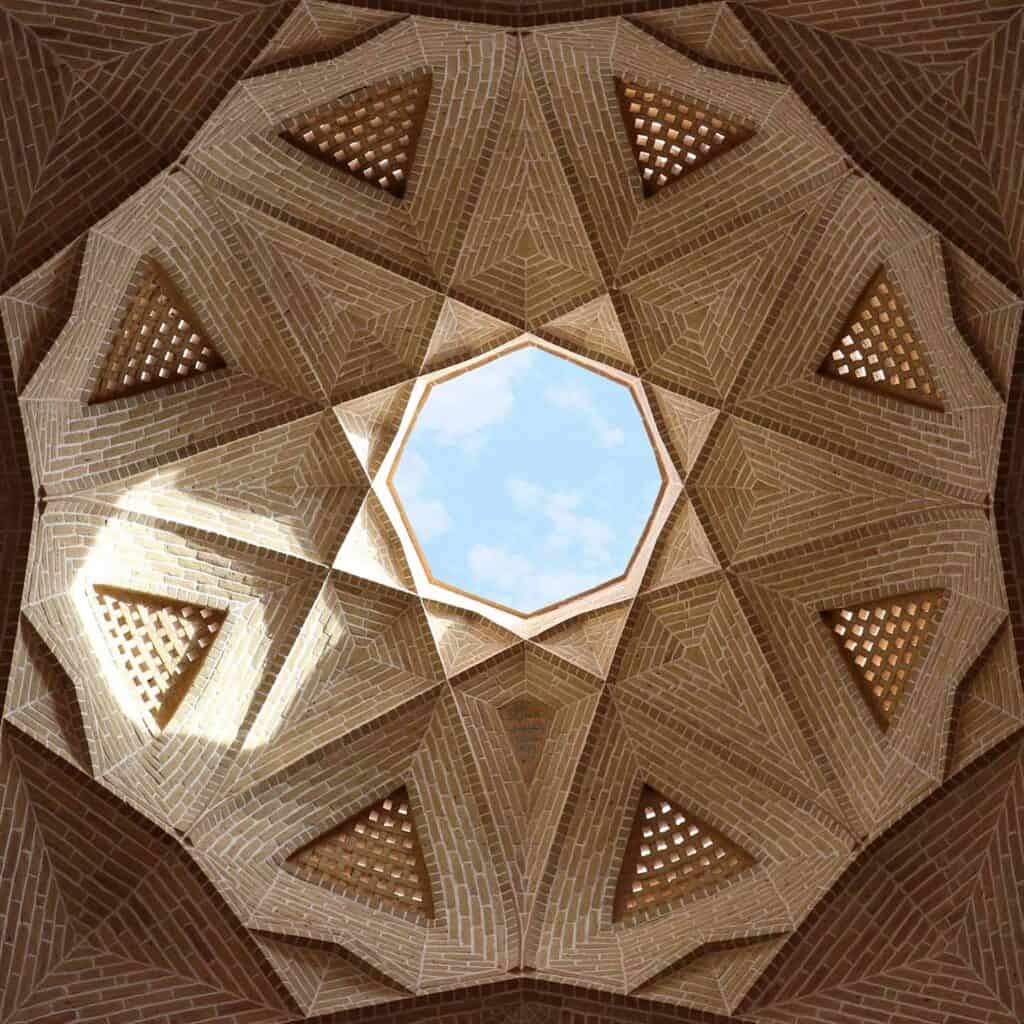
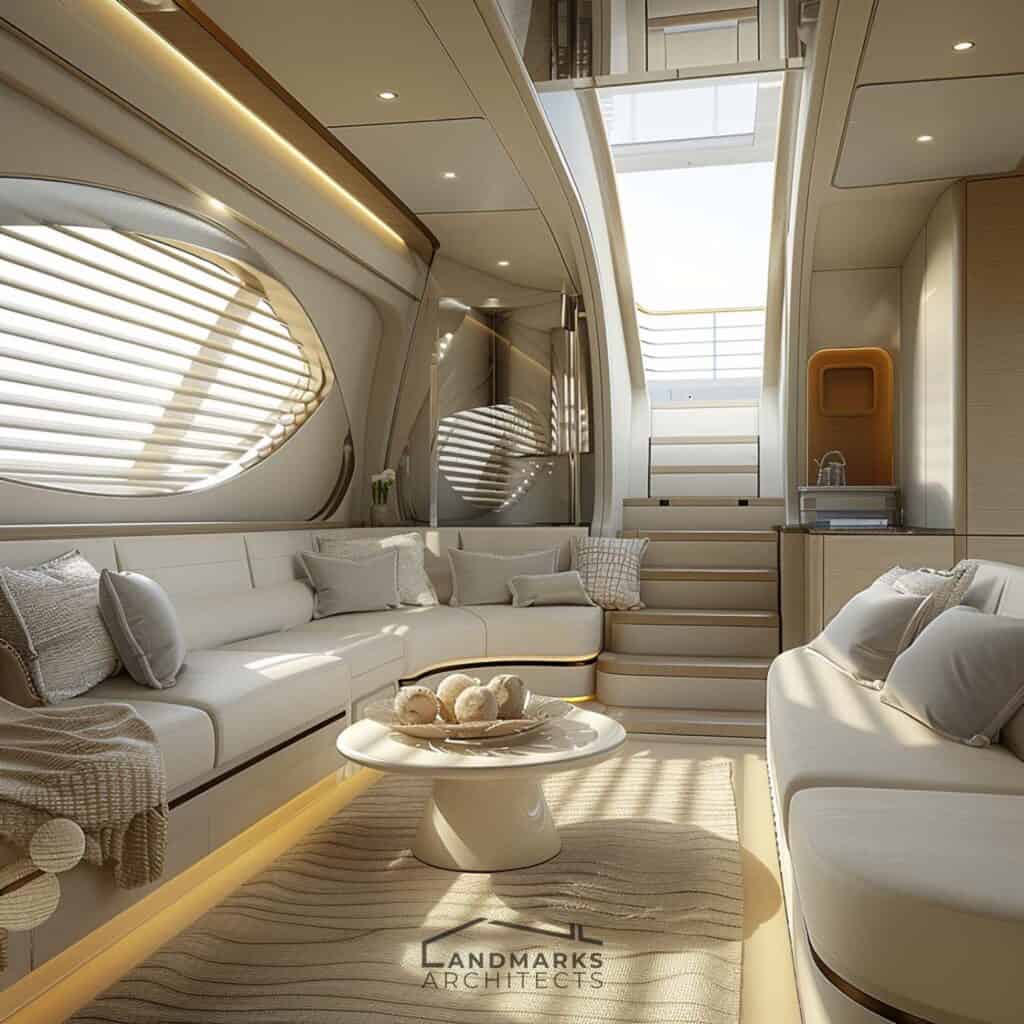
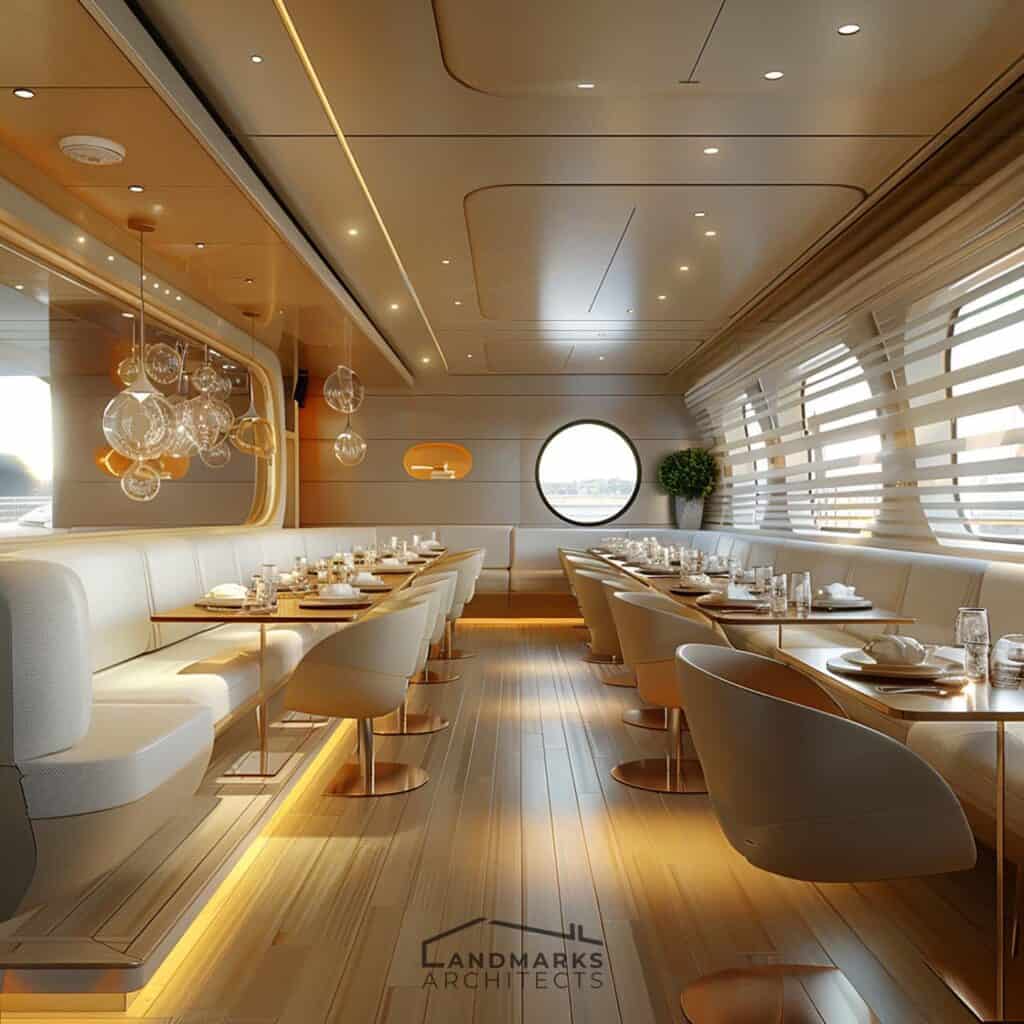
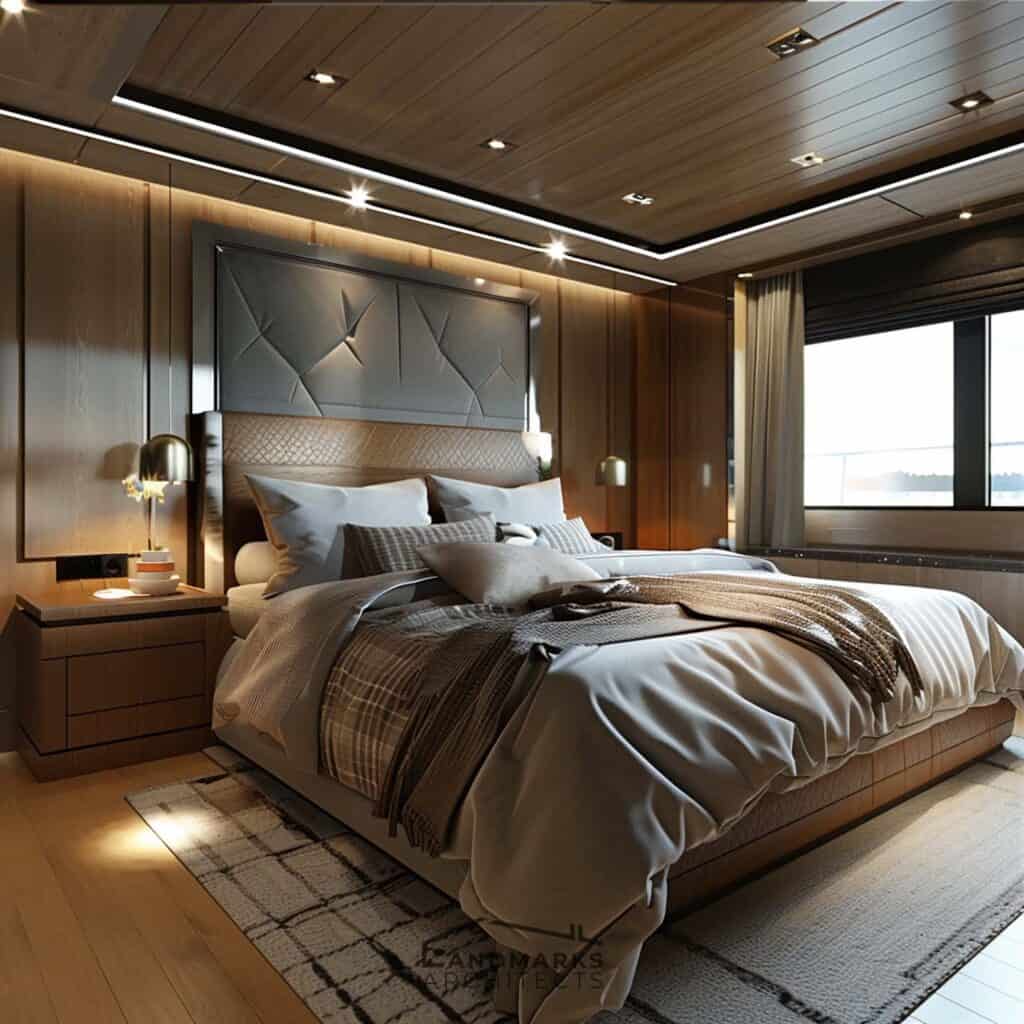
Welcome aboard as we set sail into the enchanting domain of boat interior design, where the boundless expanse of open waters intersects with the ingenious world of design craftsmanship. Within the course of this exploration, we untangle the delicate interplay between aesthetics and ergonomic efficiency, shedding light on the intricate artistry required to shape boat interiors.
This essay acts as an expansive guide, navigating through the foundational principles, considerations, and innovative techniques that contribute to the formation of interior spaces, seamlessly marrying style with the essential functionalities of life at sea. The goal is to unveil a narrative that unfurls within the confined yet dynamic parameters of a vessel’s interior.
1. Considerations Before Designing
Space Constraints on a Boat
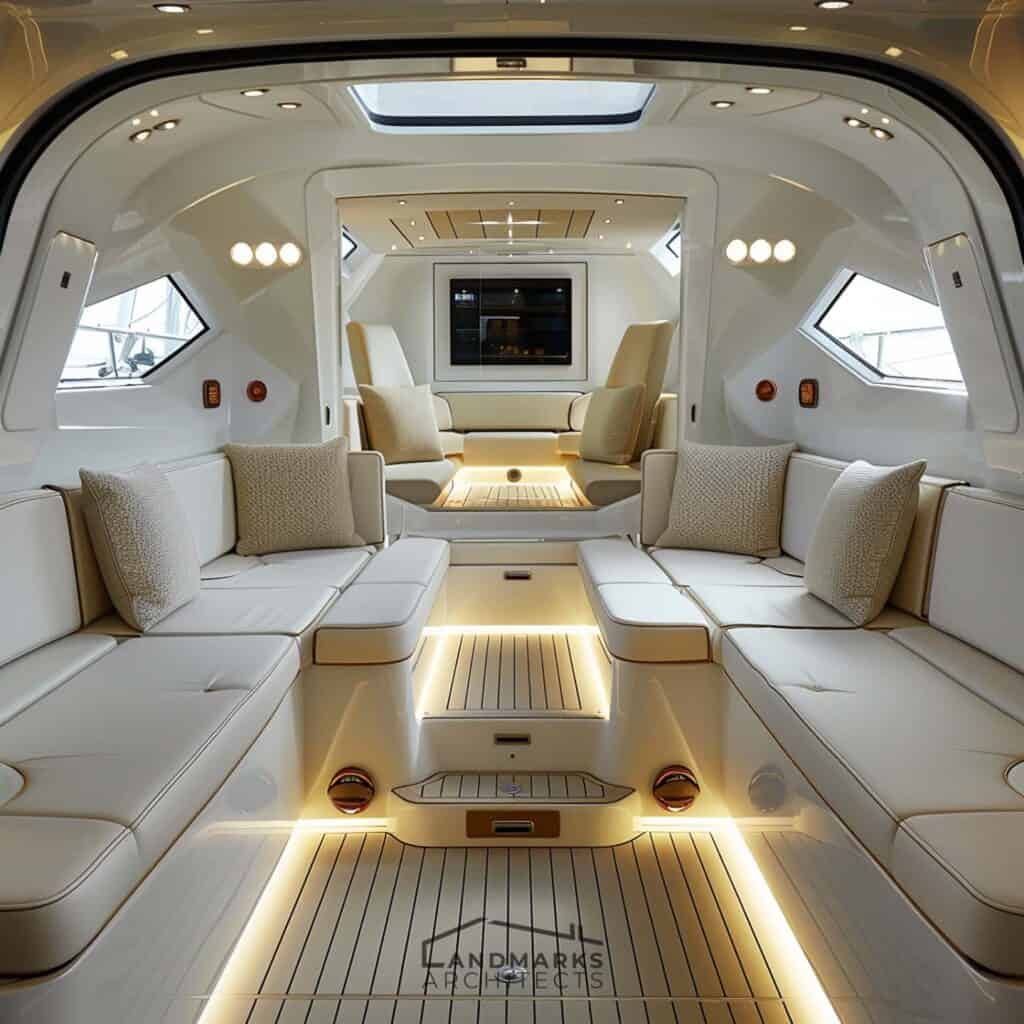

In the practical domain of boat interior design, the challenge lies in optimizing limited space without compromising functionality. Designers focus on efficient storage solutions, utilizing areas like built-in storage beneath seating and maximizing vertical spaces. The goal is to transform every inch into a usable and elegant space.
Balancing ample and cramped areas is a central theme. Designers work to ensure that abundant space doesn’t hinder the functionality of smaller areas. This delicate balance showcases the effectiveness of boat interior design, where every inch is utilized, creating an environment that feels expansive despite spatial constraints.
Durability and Resistance
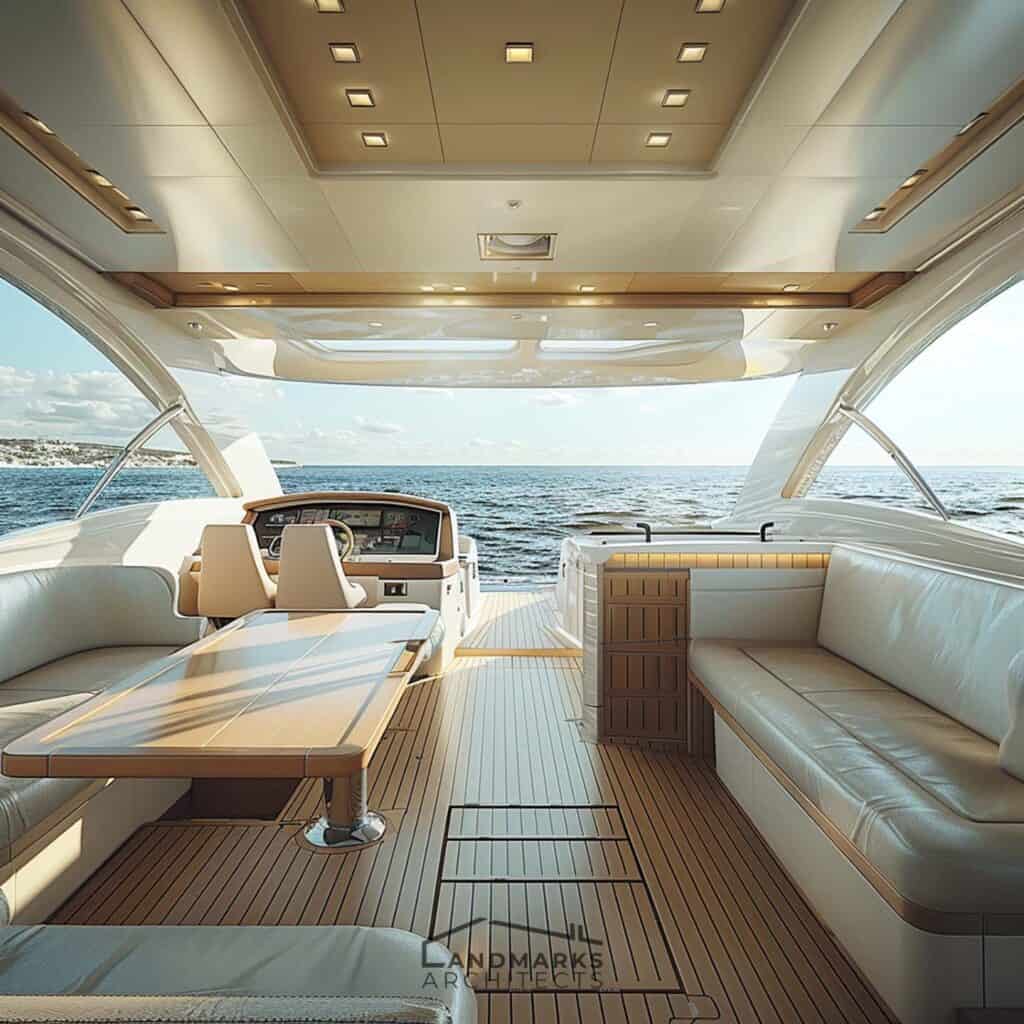
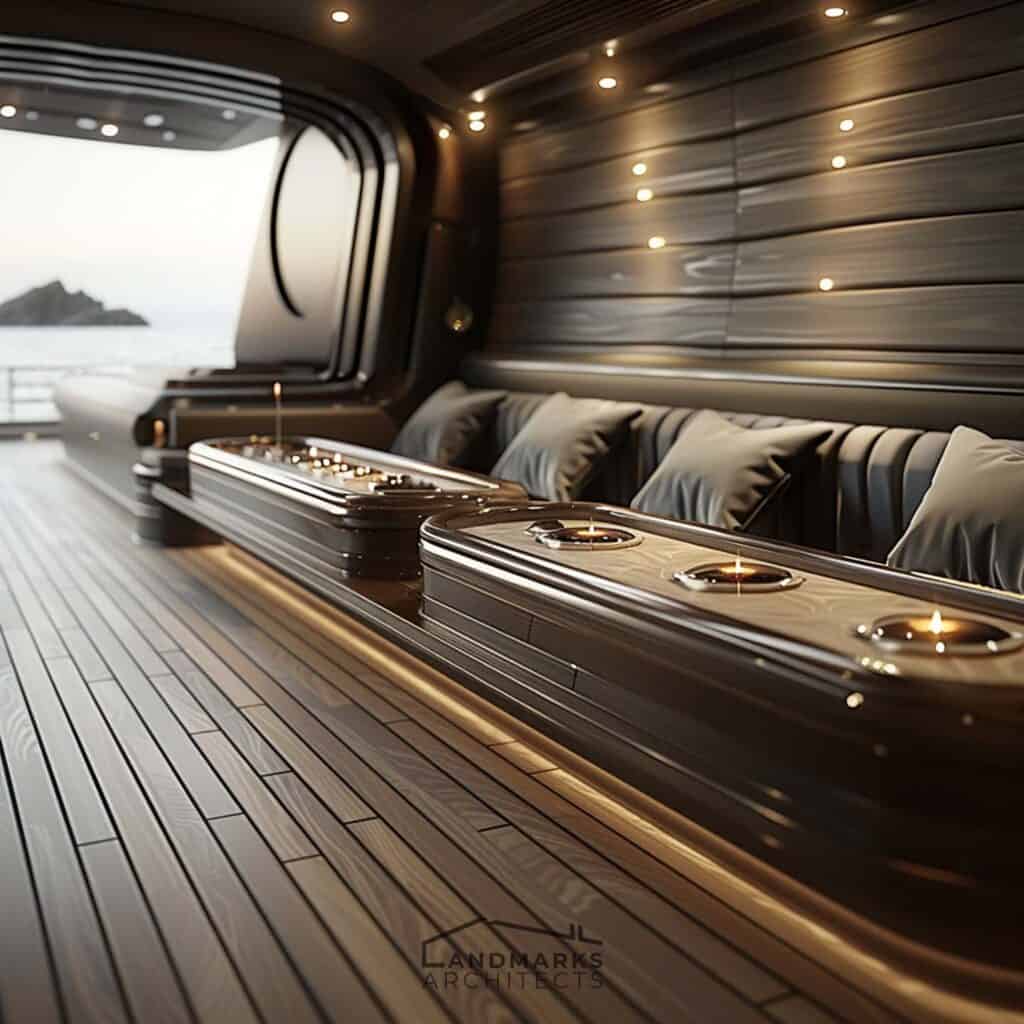
Navigating open waters exposes vessels to saltwater and harsh elements, necessitating careful material selection for boat interiors. Beyond durability, chosen materials must resist the corrosive effects of the sea. Incorporating dark wood adds not only aesthetic appeal but also warmth and sophistication, grounding the design in a timeless aesthetic.
The chart table, a significant element in boat interiors, serves practical navigation purposes and contributes to the overall aesthetic and functional harmony. Prioritizing natural light is crucial in the confined quarters of a vessel, enhancing the feeling of openness. For first-time boat owners, the design expedition reflects not only functionality but also personal aspirations, marking the beginning of their maritime adventure.
2. Theme and Style
Choosing a Theme
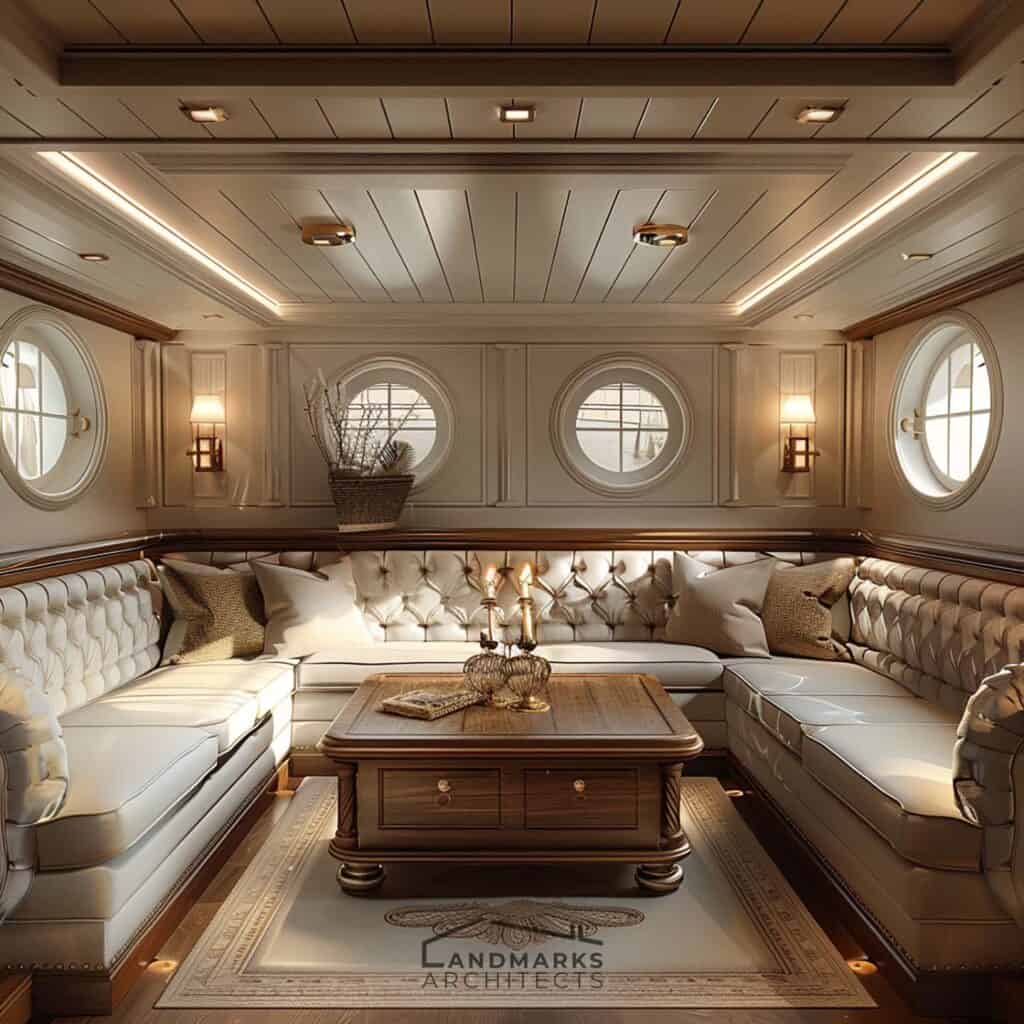
In the course of boat interior design, the decision to select a theme holds considerable weight. The chosen theme becomes the groundwork for the entire design expedition, whether leaning towards a classic nautical aesthetic or exploring contemporary design. The selected theme significantly influences the narrative of the vessel’s design. For those aiming for a lasting ambiance, the inclusion of dark wood elements stands out as a prominent feature, introducing an element of sophistication and evoking the longstanding traditions associated with seafaring and maritime luxury.
Color Palette Selection
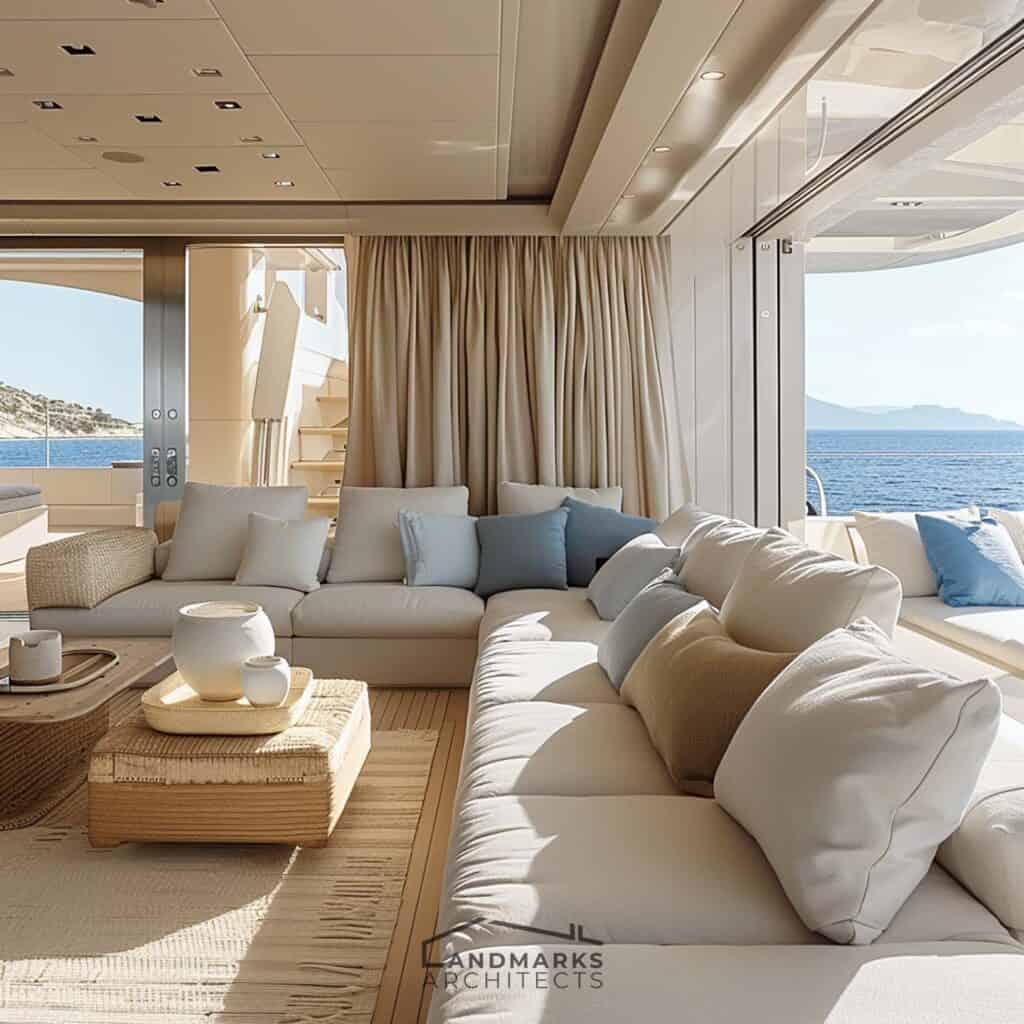

The color palette, a fundamental component of boat interior design, serves as a practical tool for establishing the mood and atmosphere within the vessel’s interior. The deliberate choice of colors that blend seamlessly with the marine environment is crucial, creating a cohesive link between the carefully crafted interior and the expansive sea. Soft blues, sandy beiges, and pristine whites are selected as hues that construct a visual backdrop, instilling a sense of serenity and openness. This color palette serves a practical purpose, offering a sensory journey that heightens the overall experience of the boat’s interior without veering into abstract elements.
3. Functional Layout
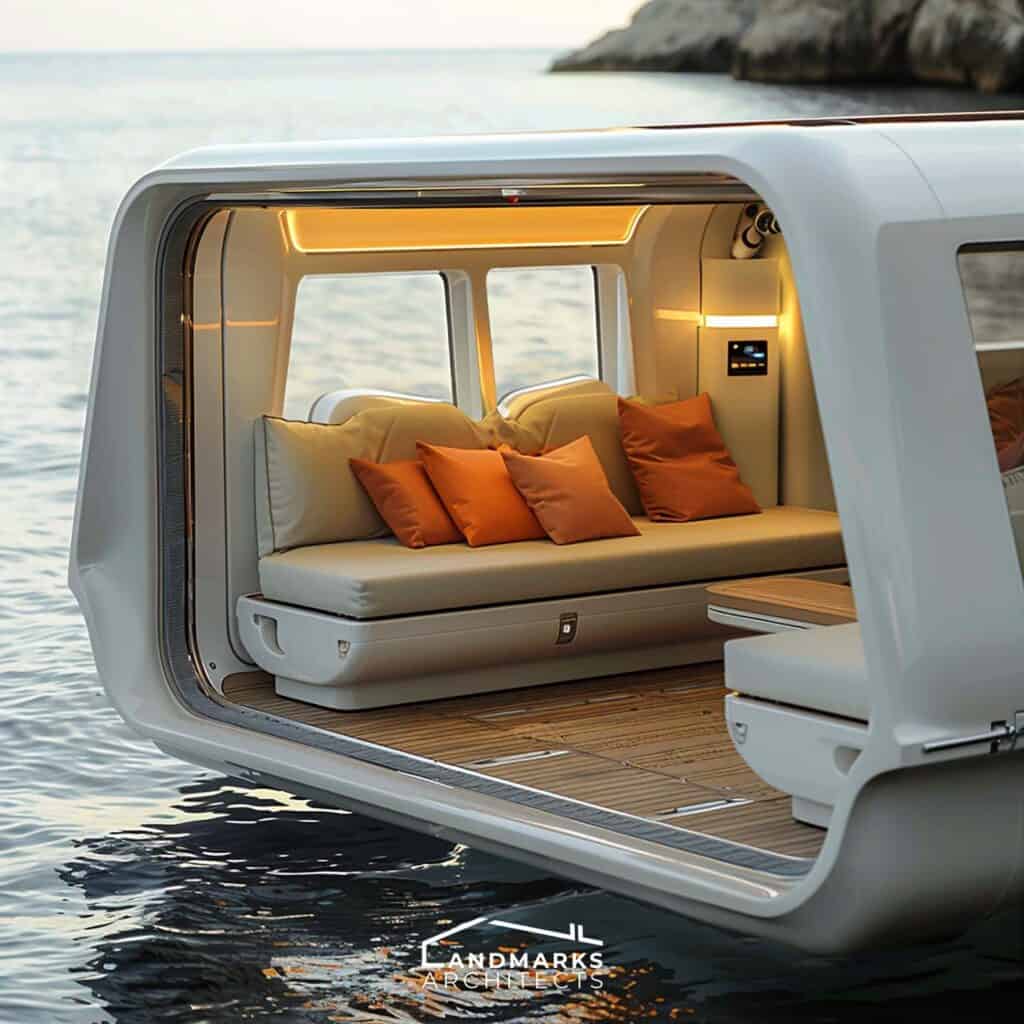
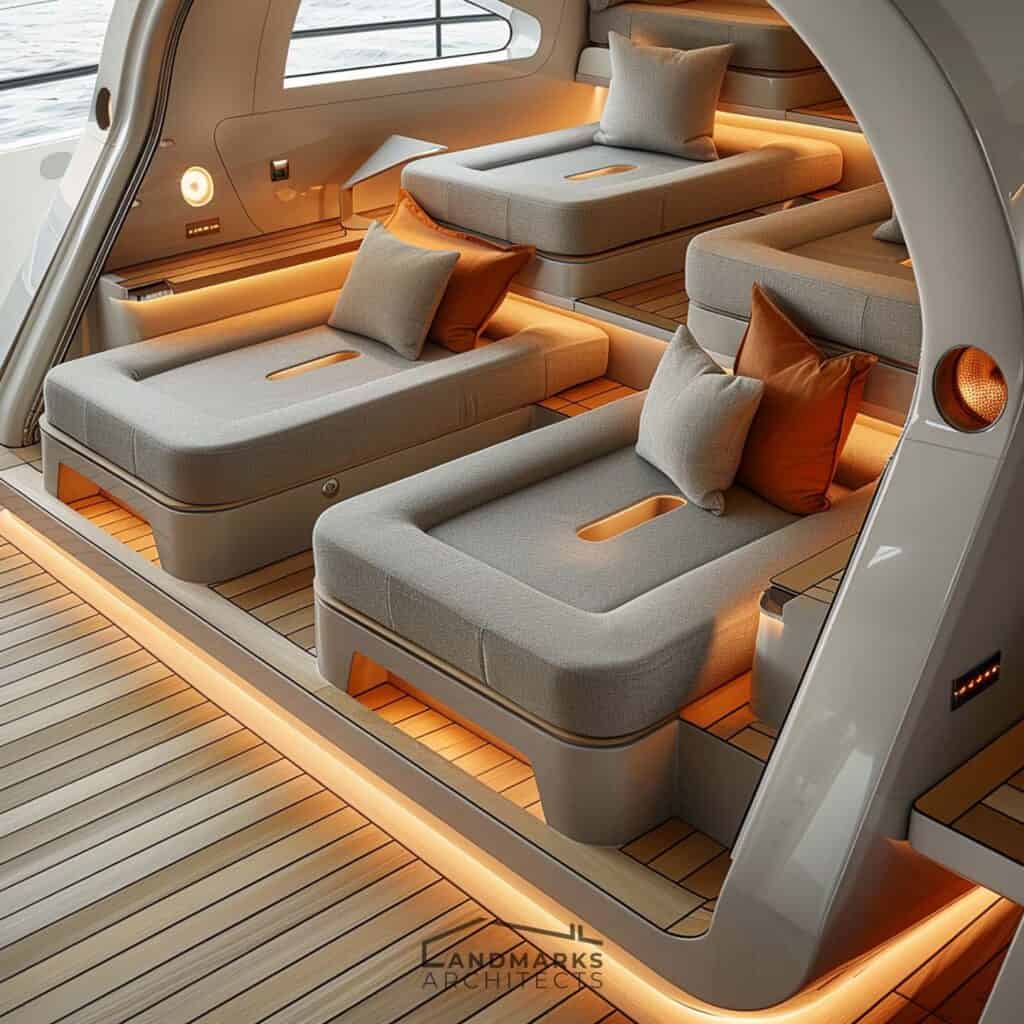
The core of boat interior design revolves around practicality, particularly in the domain of ergonomic considerations. This focus on comfort during maritime journeys takes precedence over mere aesthetic considerations. It’s a systematic approach to design that carefully arranges every element to serve a specific purpose. From organizing seating areas strategically to positioning storage compartments thoughtfully, the interior is a practical space where functionality seamlessly intertwines with design.
Designers adopt an innovative mindset as each piece of furniture transforms into a multitasking entity, serving various functions to maximize utility. The rise of foldable and collapsible furniture, coupled with discreet storage compartments, turns the interior into an adaptive ensemble. The very nature of the boat evolves, transcending its role as a mere vessel to become a dynamic space that effortlessly adapts to the preferences and needs of its owner.
4. Lighting Design
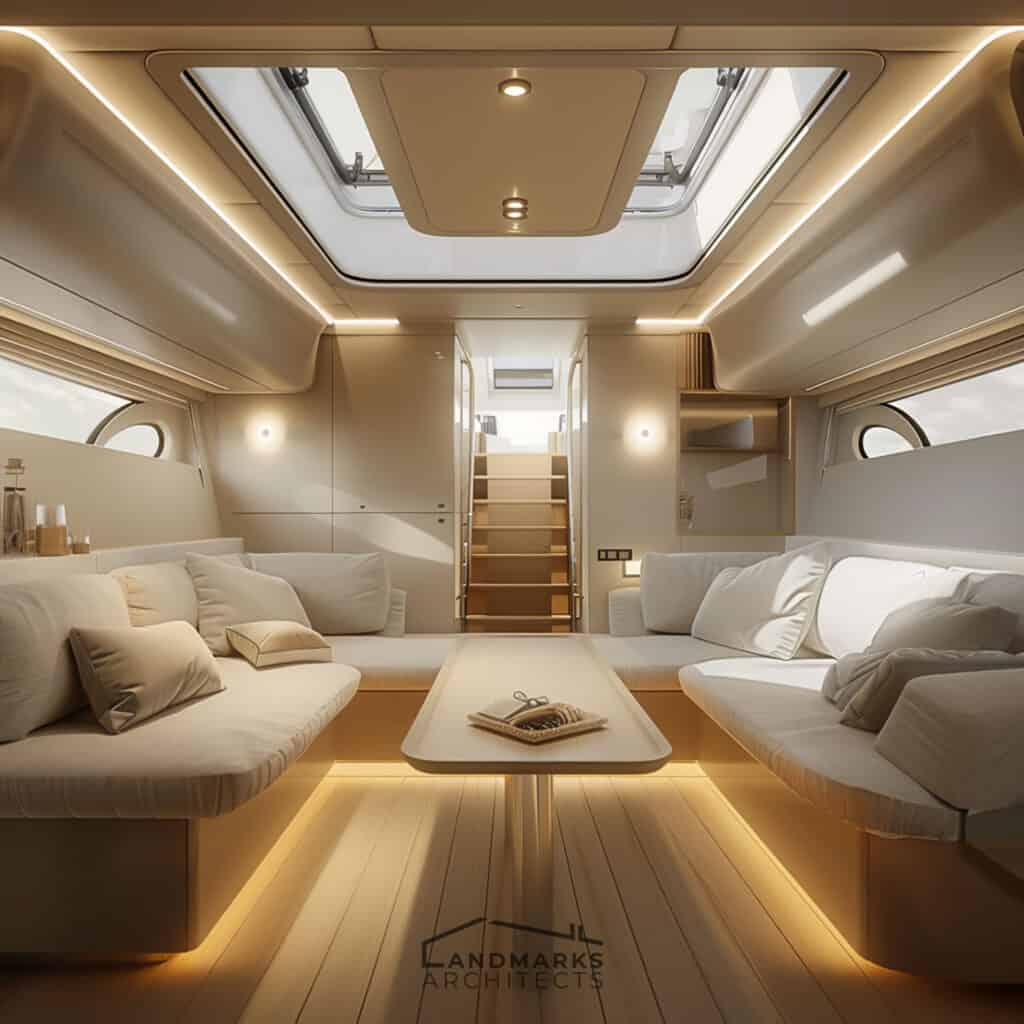
Moving beyond the essential need for illumination, lighting assumes a crucial role in shaping the ambiance within the boat’s interior. The strategic use of light extends its impact throughout both day and night, playing a significant part in the overall sailing experience. Natural light, appreciated for its practical benefits, becomes a central element in creating an environment that promotes openness and airiness, contributing to the comfort and visual aesthetics of the boat’s interior.

In boat interior design, harnessing natural light serves as a key strategy to enhance both the functionality and aesthetics of the space. Strategically integrating expansive windows and portholes within the boat’s interior space facilitates the influx of abundant sunlight, fostering a luminous and airy ambiance despite the constraints of a small space.
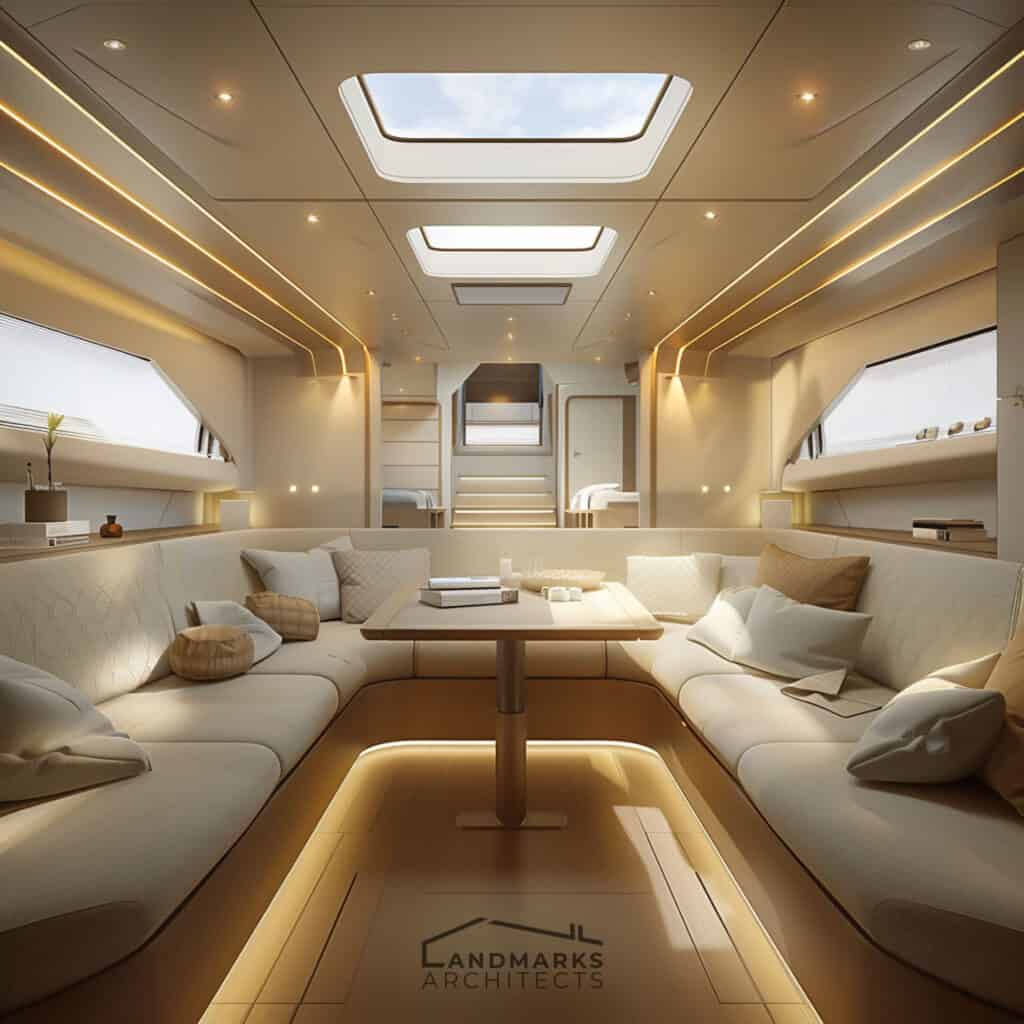
Choosing light-colored and reflective surfaces for walls and furnishings amplifies the effect of natural light, making the interior feel more spacious. Thoughtful placement of mirrors can further bounce and distribute sunlight throughout the space.

Additionally, opting for sheer or light-filtering window treatments enables a controlled diffusion of sunlight while maintaining privacy. Embracing the orientation of the boat and strategically placing seating areas or workspaces near sources of natural light not only maximizes illumination but also creates inviting and comfortable spaces. In essence, integrating natural light into boat interior design not only addresses the practical need for illumination but also contributes to a visually appealing and welcoming onboard environment.
Types of Lighting Fixtures

In the intricate domain of yacht design, LED lighting assumes a prominent role as an energy-efficient illumination source, casting a practical and functional glow that shapes the boat’s interior space.
Lighting fixtures are meticulously chosen, considering not only their functional attributes but also their contribution to the overall visual composition, making sense within the confined quarters. This thoughtful selection creates an organized lighting landscape, where each element aligns harmoniously with the overarching aesthetic vision. These fixtures transcend their role as mere light sources, becoming integral components that enhance the sensory experience and seamlessly blend practicality with the functional aspects of yacht design.
5. Decorative Elements
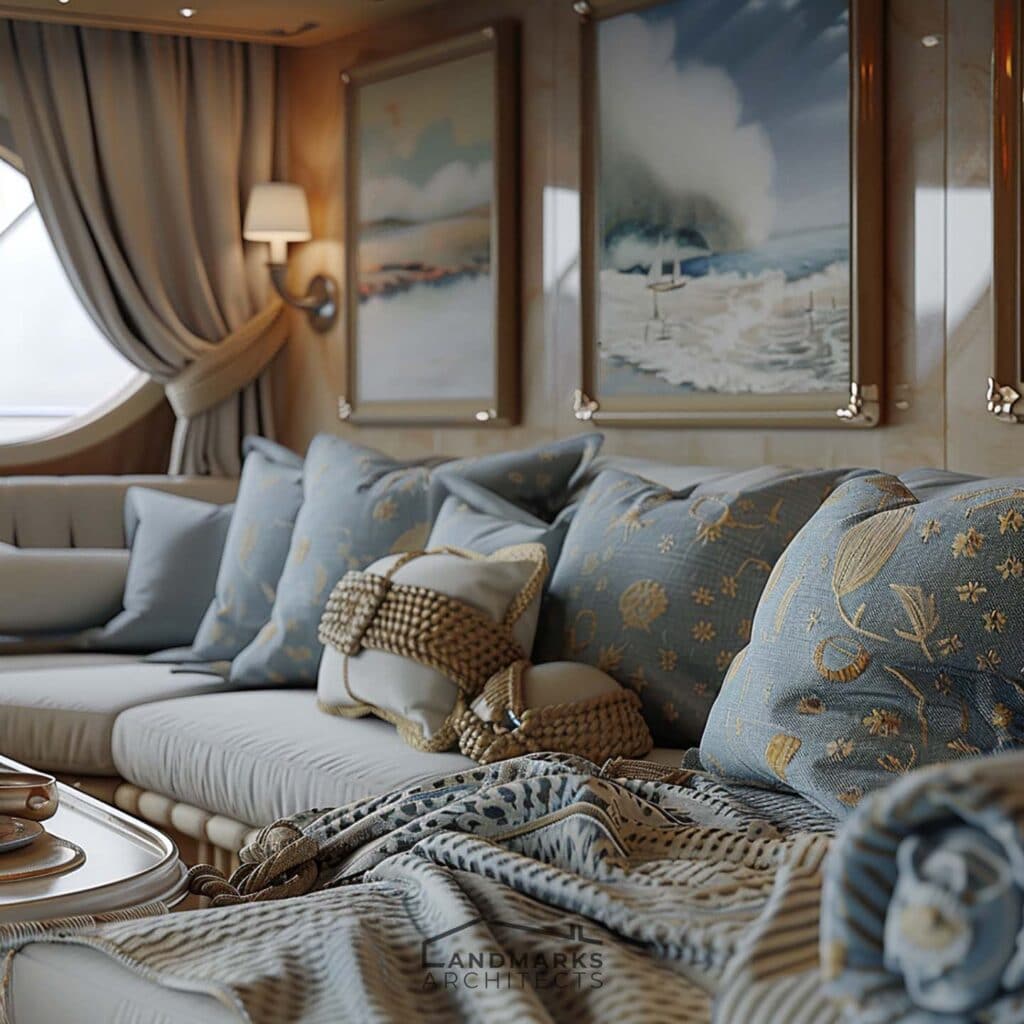
Personalizing the whole boat involves adding unique touches that make the space feel like home. This includes incorporating cherished artwork, family photographs, and sentimental souvenirs into the interior design, creating a narrative of warmth and familiarity.
In boat design, custom builds like the chart table and careful consideration of the color scheme contribute to the personalization of available space. These elements, along with other customized features, add a distinctive touch to the vessel, making it a unique floating abode.
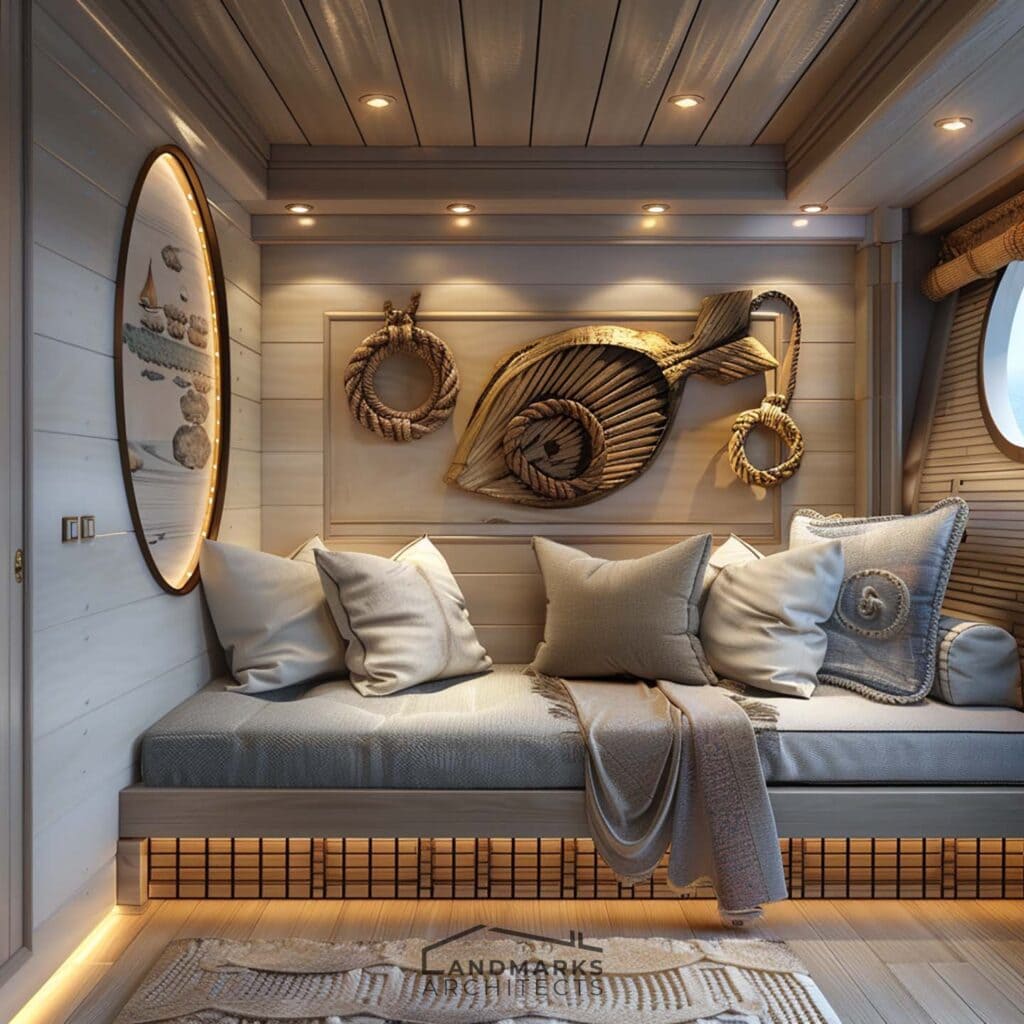
For those aiming to evoke the spirit of the sea, marine-themed decorations such as nautical artwork, intricately tied knots, and marine-inspired textiles become integral parts of the interior design. Each chosen element serves as a nod to the aquatic surroundings and contributes to the overall personalization of the yacht’s interior.
6. Smart Solutions for Boat Interiors

In contemporary boat design, the integration of technology signifies a new era, with smart solutions for boat interiors becoming indispensable in modern maritime design, catering to the evolving needs of seafarers.
Integrated navigation and control systems, customized entertainment setups designed for the marine environment, and the innovation of touch-screen controls and automated lighting collectively transform the interior into a futuristic tableau. For interior designers working on small boats, incorporating these technological elements is essential to modernize and optimize interior designs.
With a focus on maximizing space, efficiency, and comfort, these smart solutions redefine boat interiors, creating environments that are not only technologically advanced but also tailored to the unique challenges of life at sea.
7. Maintenance and Longevity
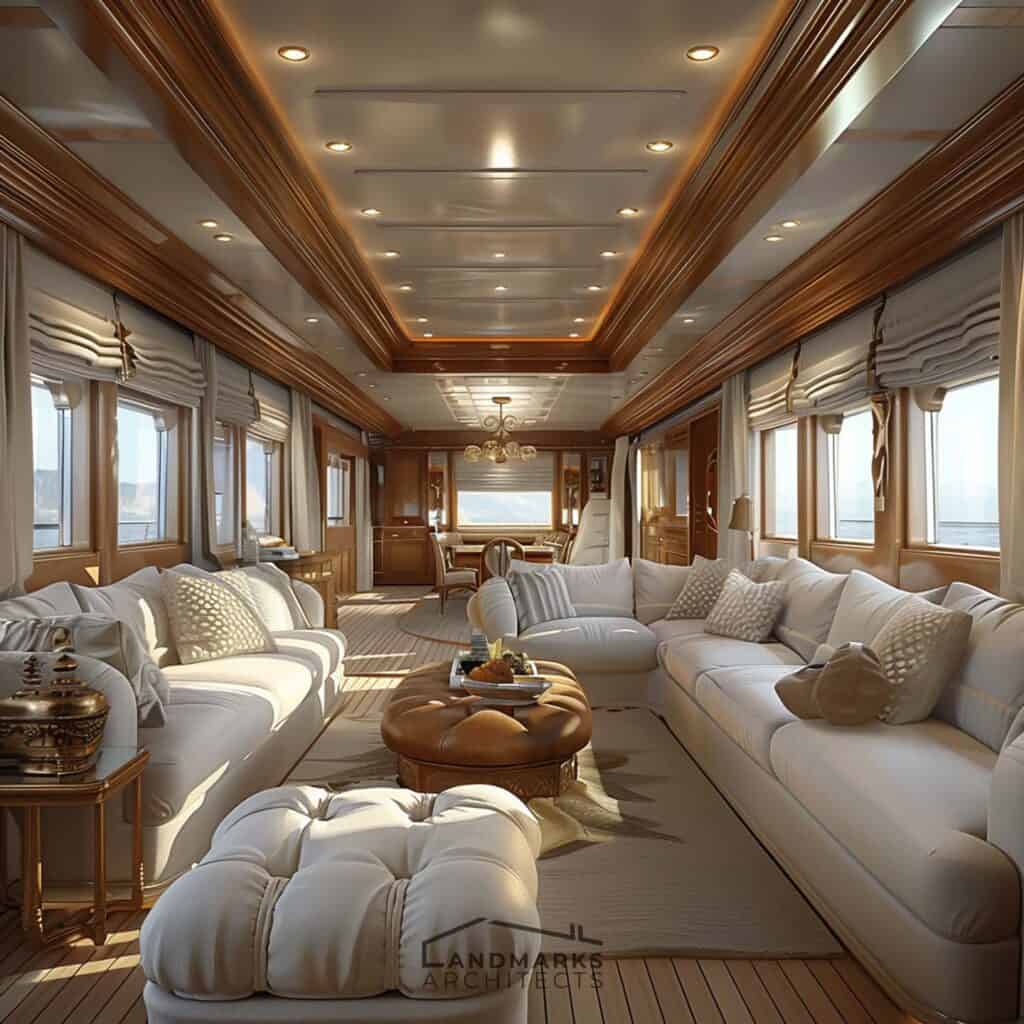
In the practical domain of boat interior design, the durability of the crafted space relies heavily on the careful selection of materials. The focus here transcends mere aesthetics; it emphasizes resilience. The selection of materials that withstand the test of time, resisting wear and tear, is not just a preference but a commitment to long-lasting endurance. From fabrics that endure the elements to hardware that repels corrosion, each choice serves as a protector of the interior’s longevity.
Moving beyond the initial design considerations, the ongoing preservation of boat interiors extends into the domain of routine maintenance. This is the practical routine that shields the interior against the persistent challenges posed by the sea. Regular cleaning, the implementation of proper ventilation practices, and timely repairs conducted as standard procedures are the measures ensuring that the interior withstands the trials of both time and the maritime environment, particularly in the case of an old boat with unique preservation needs.
Boat Interior Design: A Recap

In boat interior design, the culmination is not merely the creation of a functional space but a practical achievement that resonates with every ripple and gust. By meticulously navigating the seas of spatial constraints, selecting thematic compasses, prioritizing ergonomic functionality, and seamlessly weaving technology into the narrative, boat enthusiasts conjure interiors that transcend the mundane.
In conclusion, navigating the waters of boat interior design for your first boat opens up a world of possibilities, revealing that there is indeed so much space to explore and personalize. The exploration of transforming your vessel into a floating sanctuary is not just about aesthetics; it’s about creating a haven that resonates with your unique style and preferences. As you venture into this exciting endeavor, remember that the canvas is vast, and the choices are yours to make.








